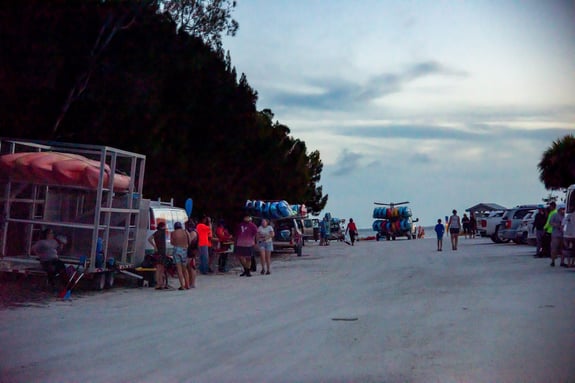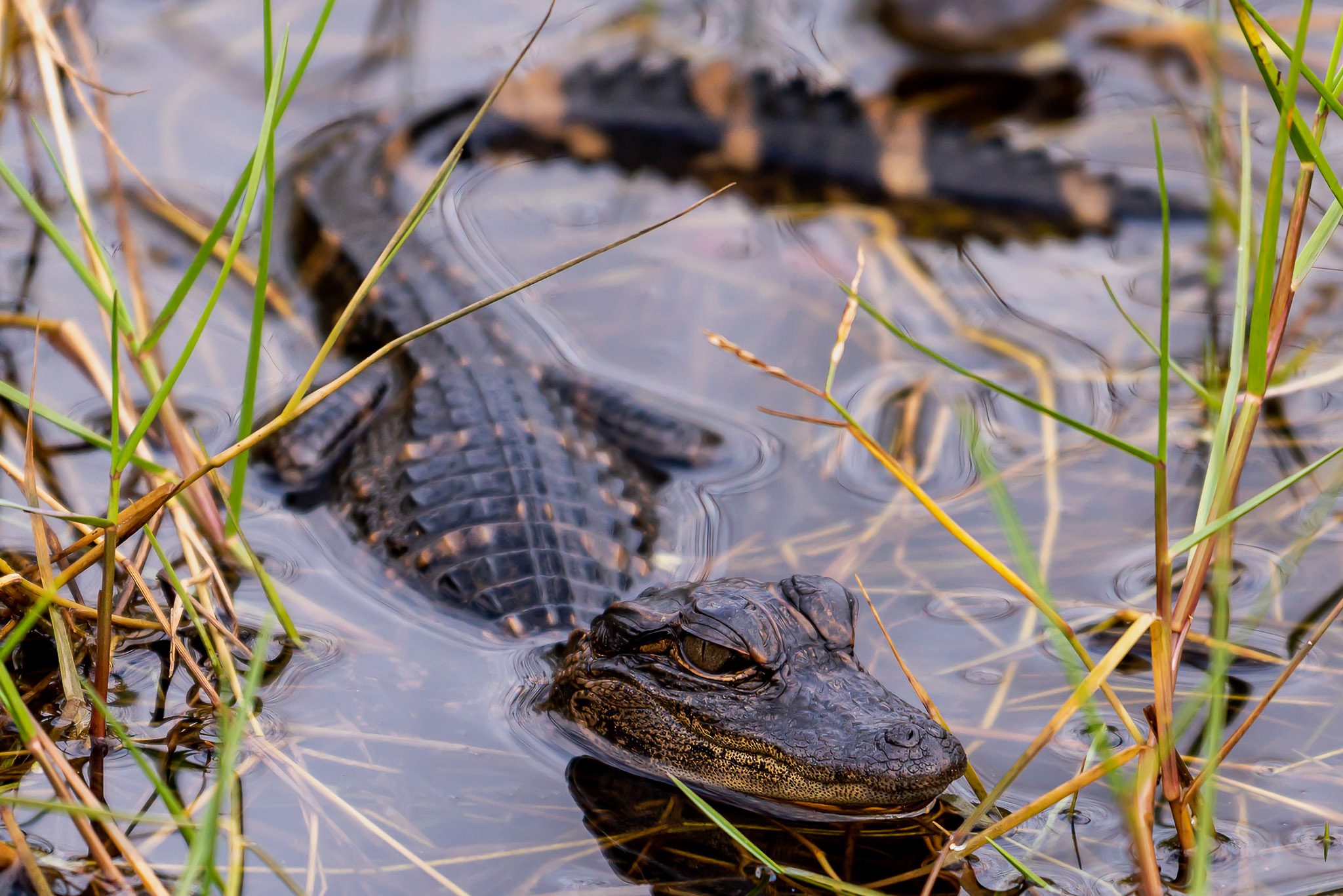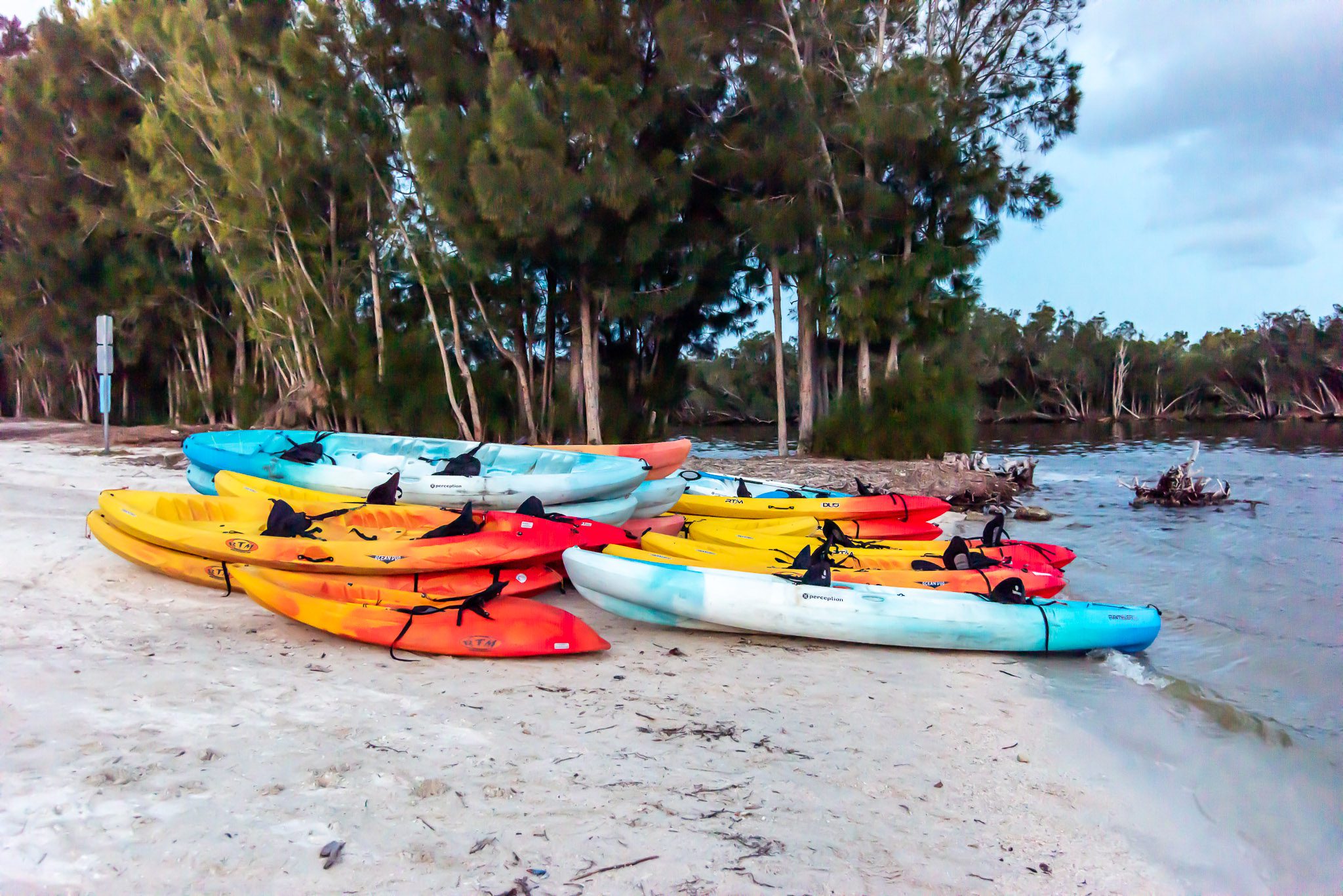What is Haulover Canal in Merritt Island National Wildlife Refuge?
Haulover Canal
Haulover Canal is a man-made waterway located within the Merritt Island National Wildlife Refuge in Brevard County, Florida, USA. The Haulover Canal was constructed to connect the Mosquito Lagoon and the Indian River Lagoon which are separated by a narrow strip of land called Merritt Island. The canal was constructed to provide a safer and more efficient water route for boats, barges, and other watercraft. Over time the canal was enlarged, a bridge was constructed, and more access was created to accommodate heavy use and traffic. The Haulover Canal seen today was completed in 1887 and is approximately 1.5 miles long and 30 feet wide.
Why Is There A Haulover Canal Bridge?
The Haulover Canal Bridge is a historical drawbridge that crosses over the canal to connect Merritt Island to the Florida mainland. There’s several boat and kayak ramps around Haulover Canal today. Despite the safety restrictions during rocket launches and heavy boat traffic, Haulover Canal continues to be popular destinations for visitors seeking to experience natural beauty.
Visiting The Indian River Lagoon
Haulover Canal offers great access to the Indian River Lagoon but comes with a few downsides. Merritt Island and Haulover can also be shut down for rocket launches. Some people are not comfortable at Haulover with the regular flow of boats and barges or being in an enclosed area with alligators. Canaveral National Seashore is a popular alternative to Merritt Island that is easier to access and has more amenities.
Canaveral National Seashore
Canaveral National Seashore is a National Park to the north of Merritt Island. The most popular locations to visit the National Park are Apollo Beach and Playalinda Beach. Apollo Beach offers the opportunity to see National Historic Sites like Turtle Mound and wildlife like bottlenose dolphins, sea turtles, Florida manatees, bald eagles, osprey, and more. Playalinda Beach offers expansive undeveloped beaches with thousands of sea turtle nests, bald eagles, dolphins, and manatees.
Merritt Island Wildlife
Things To Do
Fishing & Boating
One notable aspect of Haulover Canal is its importance as a fishing destination. The canal provides an important habitat for many different types of fish, including redfish, snook, and spotted sea trout.
The canal is known for its excellent fishing opportunities because of the amazing habitat. Anglers can be seen casting their lines from the banks of the canal or from boats on the water.
Birdwatching
Healthy fisheries habitats around the canal also attracts a variety of birds, including egrets, herons, and ospreys, which can be seen fishing in the shallow waters. with a variety of wading birds, shorebirds, and raptors present in the area.
The area is popular for birdwatching and photography and has several viewing platforms to see these majestic birds.
Wildlife Viewing
Visitors to Haulover Canal can explore the area’s rich history and natural beauty through a variety of activities. The area features several hiking trails, including the Manatee Observation Deck Trail, which provides an opportunity to see manatees in the canal.
Haulover Canal continues to be a significant part of the Merritt Island National Wildlife Refuge and an important resource for local residents and visitors. In addition to its recreational opportunities, the canal is also an important site for scientific research and environmental conservation.
The canal and the surrounding wetlands provide important habitats for thousands of plant and animal species, including threatened and endangered species such as the West Indian manatee and the Florida scrub-jay.
Merritt Island Wildlife Refuge Alligators
Haulover’s American Alligators
The Haulover Canal in the Merritt Island National Wildlife Refuge is home to a wide variety of wildlife, including alligators. Alligators are a common sight in the canal and in the surrounding wetlands and waterways.
Alligators are native to Florida and are an important part of the region’s ecosystem. They play a critical role in maintaining the balance of the wetland ecosystem, helping to control the populations of other species, such as fish and birds. Alligators are also a top predator in their environment and help to regulate the populations of other animals by consuming weaker or injured individuals.
Alligators are a common sight in Merritt Island National Wildlife Refuge, they are an important part of the local ecosystem and should be respected. Visitors can enjoy the natural beauty and ecological diversity of the region safely when respecting the wildlife.
Address
Courtenay Parkway North
Mims, Florida 32754
Operating Hours
Permit Required: 24 Hours
Possible Shutdowns for Rocket Launches
Parking Fee: $10
Haulover Rocket Launches
Haulover Canal and Merritt Island National Wildlife Refuge shut down during many rocket launches. This is because Cape Canaveral rocket launch pads are so close that the area may be closed for public safety. This is because launches can produce so much heat, light, and noise that it’s dangerous to people nearby.
When a rocket launch is scheduled, the Kennedy Space Center and other authorities will typically announce a safety zone around the launch site. This safety zone can extend several miles in all directions and may include the Haulover Canal and other areas within the Merritt Island National Wildlife Refuge. During this time, the canal and surrounding areas may be closed to the public for safety reasons.
Visitors to the area should always check for launch schedules and any safety restrictions before planning a visit. The Kennedy Space Center and other authorities typically provide up-to-date information about launch schedules and safety restrictions on their websites and social media channels.
Visitors should also pay attention to signs and announcements in the area and to ask for instructions from park rangers or other officials. Rocket launches are easily viewed from Canaveral National Seashore without the park being shut down.
Canaveral National Seashore
Alternative to Merritt Island
While Haulover Canal and the Merritt Island National Wildlife Refuge offer a unique and valuable experience for visitors, some people may prefer to visit the nearby Canaveral National Seashore for a more pristine and popular location.
What Is Canaveral National Seashore?
The Canaveral National Seashore is a protected area that covers over 57,000 acres and provides important habitat for a variety of plant and animal species, including several endangered and threatened species. The seashore is known for its beautiful beaches, crystal-clear waters, and diverse wildlife, including sea turtles, shorebirds, and marine mammals.
Why Visit Canaveral?
The Canaveral National Seashore offers a wide range of recreational opportunities for visitors, including swimming, surfing, fishing, and boating. The seashore also features several hiking trails, as well as opportunities for birdwatching and wildlife viewing.
One advantage of the Canaveral National Seashore over Haulover Canal and the Merritt Island National Wildlife Refuge is that it is typically less affected by safety restrictions during rocket launches, as it is located further away from the Kennedy Space Center. Additionally, the seashore is a more popular and well-known destination, with more facilities and amenities available for visitors.
Overall, whether you choose to visit Haulover Canal and the Merritt Island National Wildlife Refuge or the Canaveral National Seashore, you are sure to enjoy the natural beauty, ecological diversity, and recreational opportunities that this region of Florida has to offer.
Explore Apollo or Playalinda Beach
Apollo Beach Visitor Center
Apollo Beach, Canaveral National Seashore is located in New Smyrna Beach. Apollo Beach is a popular destination for visitors seeking a more secluded and natural beach experience. The beach is known for its pristine white sand, crystal-clear water, and amazing wildlife. Popular wildlife seen from Apollo Beach include bottlenose dolphins, sea turtles, shorebirds, and Florida manatees.
Turtle Mound at Apollo Beach
Turtle Mound is located in New Smyrna Beach at Apollo Beach, Canaveral National Seashore. Turtle Mound is a significant cultural and historical site that provides visitors with an opportunity to learn about the prehistoric Native American settlements in the area. The site features a large shell mound that was constructed by the Timucuan Indians more than 1,000 years ago and offers a glimpse into the lives of these early inhabitants.
Playalinda Beach, Titusville
Playalinda Beach, Canaveral National Seashore is on the north shore of Cape Canaveral and is located near Titusville and Mims. Playalinda Beach is a popular destination for visitors seeking a more natural and unspoiled beach experience. The beach is known for its remote location, natural beauty, and abundance of wildlife. Visitors can enjoy swimming, surfing, fishing, and wildlife watching, as well as exploring the natural dunes and wetlands that make up the surrounding area.
Exploring Florida’s Indian River Lagoon
Whether you choose to visit Apollo Beach or Playalinda Beach, you are sure to enjoy the natural beauty, ecological diversity, kayaking, and recreational opportunities that this unique region of Florida has to offer. Each location offers a unique experience. Visitors have the opportunity to discover the area’s cultural and ecological beauty.
History of the Haulover Canal
Early History of Merritt Island
The early history of Merritt Island peninsula dates back to the time of prehistoric Native American settlements in the area. Archaeological evidence indicates that Native Americans inhabited the region for thousands of years, and it is believed that the narrow spot on the peninsula used by them as a transportation route between the Mosquito Lagoon and the Indian River Lagoon. The peninsula later came known as “haulover” by early explorers, settlers, and traders as they had to “haul” boats and canoes over the land when travelling.
The United States government established Fort Ann nearby in 1837 on the Indian River Lagoon during the 2nd Seminole War (1835–1842) to protect and guard the “haulover” from Native Americans that might be carrying military supplies from the lagoon to the river.
Building Haulover Canal
Before the canal was built, larger boats and ships had to navigate around the Merritt Island peninsula in the Atlantic Ocean with shifting sandbars and strong currents. This made transportation of goods and people slow and dangerous, and so the government began to investigate the possibility of building a canal to connect the two lagoons.
The construction of the Old Haulover Canal began in the early 1840s and was completed in 1852. The old canal was 500 yards long, 3 feet deep, and 10-14 feet wide. It was dug entirely by hand, with slaves and workers using shovels, picks, and wheelbarrows to excavate the soil and rock. The work was difficult and dangerous, with many workers suffering from illnesses and injuries during the construction process. The Old Haulover Canal was so shallow and narrow that it was easily clogged and blocked by debris and mud.
Florida Coast Line Canal and Transportation Co. constructed the current canal nearby the Old Haulover Canal in 1887 using dynamite to blast out the rocks and soil. Once the canal was completed, it quickly became an important transportation route for goods and people traveling between the two lagoons.
Modern Haulover Canal & Birdge
Haulover Canal became a federal project in 1927 as part of the Intracoastal Waterway and is maintained by the Army Corps of Engineers. It has been expanded and renovated several times to include a draw bridge, boat launches, and observation areas. Haulover also played a key role in the early days of the space program, with many of the materials and equipment for the Kennedy Space Center being transported through the canal.
Merritt Island Wildlife Refuge Boat Ramps
Visitors to Haulover Canal can explore the waterways and wetlands through activities like hiking, boating, or kayaking. The area features several hiking trails and lookouts including the Manatee Observation Deck, which provides an opportunity to see manatees in the canal. Visitors can also take guided tours of the crowded waterways to explore the canal and the surrounding waterways.




